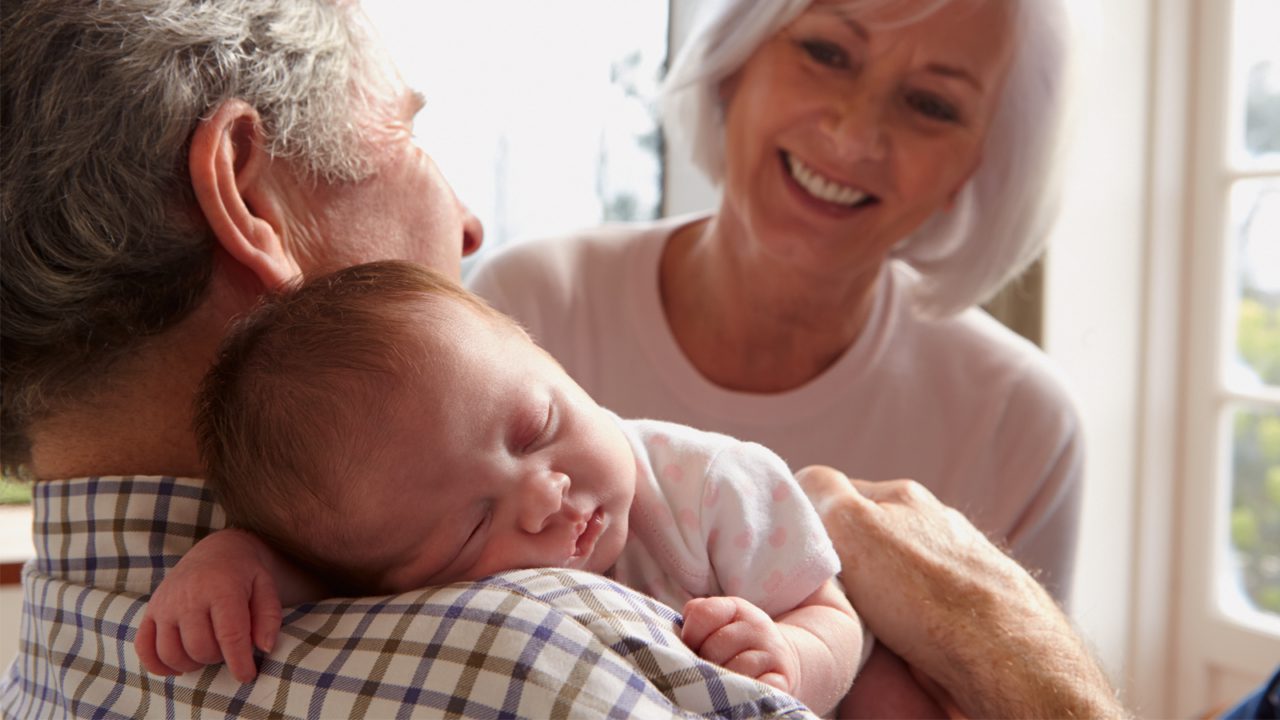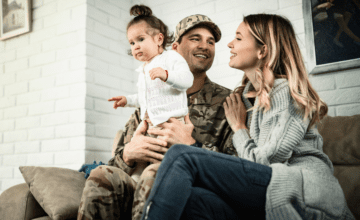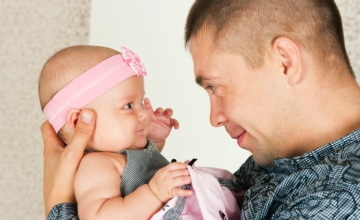There is something especially precious about a sleeping baby—and grandparents are often experts at getting grandbabies into this peaceful state. However, there have been a few very important changes over the past 20 years around safe sleep for babies that are important to keep in mind as you care for your grandbaby.
The following are some specific recommendations from The American Academy of Pediatrics about how to put babies to bed during the first year of life.
1. On Their Backs
Researchers have found that babies who sleep on their backs are less likely to experience SIDS, or Sudden Infant Death Syndrome, also known as “crib death.“ Of course, you can still hold your sleeping grandbaby as long as you would like! But when you put the baby down to sleep, make sure he is on his back. Once babies can roll over on their own (4 to 7 months old) they often change positions during sleep and do not stay on their backs all night long. At this point, the risk of SIDS is greatly reduced.
2. On a Firm Mattress
Never put your grandbaby to sleep on a pillow, couch, sheepskin, waterbed, or other soft surface.
3. In a Room That is Warm, But Not Hot
Keep your grandbaby’s bedroom at a temperature that is comfortable for an adult in a short-sleeved shirt.
4. In a Nonsmoking Environment
Research has shown that exposure to secondhand smoke doubles a baby’s risk of SIDS.
5. With no Toys or Loose Bedding
These items in a crib may obstruct the baby’s breathing. There should be no blankets, stuffed animals, or bumpers in the crib.
6. With a Pacifier if the Baby Uses One
Recent research found a link between pacifier use and a lower risk of SIDS. Using a pacifier, however, is a very individual decision. Ask your adult child and his or her partner whether they have opted to use pacifiers or not.
7. What About Co-Sleeping?
Many parents and grandparents choose to sleep with their young children or grandchildren. This can be a wonderful bonding experience for all. To co-sleep safely:
- Make sure the baby cannot fall out of the bed or get stuck between the mattress and wall.
- If an older child is also sharing the bed, an adult should sleep between baby and child.
- Pets should not share a bed with the baby.
Finally, adults should not co-sleep with a young child if they: smoke, have recently drunk any alcohol, and/or have taken any drugs or medications that cause drowsiness.
References
Information from the following websites was used to develop this page:
- http://www.kidshealth.org/parent/general/sleep/sids.html
- http://www.babyfriendly.org.uk
- http://www.nichd.nih.gov/sids/upload/PART_II.pdf
Rock-a-Bye Right: Safe Sleep Recommendations for Babies and Toddlers





